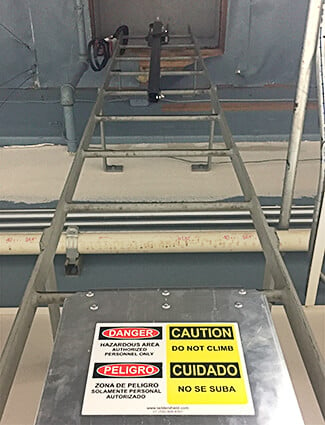Roofing Work Demands Climb in Storm-Hit Areas
03
February,
2023
2 MINUTE READ

After a season of storms, hurricanes, tornadoes, and snow, the eastern United States is preparing for a warm shift. Damage to homes and businesses have drawn a desperate need for roofing repairs and the demand is more than local contractors can handle, according to TruRelief Roofing Experts in Charlotte, N.C. When roofing workloads pile up, workers might feel the need to take short cuts or put tasks above safety in an attempt to save time and money. As warm weather approaches, roofing employers can review their practices to follow OSHA roofing regulations and protect roofers.
Especially during the spring in North Carolina, tornadoes can occur with little or no warning. A violent system swept through Greensboro last week, destroying homes and creating mass destruction in less than 24 hours. For the next few months, roofing repairs will be a big issue for an industry that is facing critical levels of concern due to a shortage of workers.
"It's going to take every roofing company in the state to recover. It was a 33-mile tornado," TruRelief's owner James Ortega said. He said he is one of only a handful of roofing contractors who currently are on hand to help replace and repair the tops of at least a dozen homes and several businesses that were damaged. When roof work demand is high, the potential for error can increase.
Hazards in Roofing
At No. 1 on the list of OSHA's Top 10 violations of 2017, there were 6,072 for fall protection. The Bureau of Labor and Statistics data for 2016 shows that 101 roofers were killed on the job. Roofing workers face difficulties on the job, such as exhaustion from weather, heavy lifting, and long hours. Remind workers to follow proper procedures and to adhere to safety practices. Here are three main rooftop work safety hazards:
- Fall protection ? Unstable roofs, workspace edges, and working at a great height or roof pitch can cause workers to lose balance. Post visual reminders for employees to use personal protective equipment such as hardhats and harnesses that fit each worker properly and that is correct for the task. Keep PPE readily available and organized.
- Hot/electrical work ? Whether welding, tar spreading, or working with other flammable chemicals, energy, and materials, the potential for burn injury and fire increases. Apply signage in areas where there may be hot work or electrical risks. Roofing safety managers should ensure that any energized equipment on the job site does not affect their workers' ability to perform their responsibilities safely.
- Ladders ? A common cause for injury is improper ladder use. A fall of 6 ft. or greater off of a ladder frequently results in injury or death. Label ladders for their maximum heights, weight limits, and to list usage rules.

Stay on Top of Safety
To increase awareness about the roofing industry, including the importance of safety, National Roofing Week is in June, and it is hosted each year by the National Roofing Contractor Association. When performing roofing work, safety is the responsibility of everyone involved on the project. Managers and employees can identify hazards and adhere to safety and compliance standards to help avoid injuries and deaths. Plan ahead with safety in mind. Stay on top of communication and education through signs and labels, and visual aids that provide best practice tips, reminders, and more. Ensure safety gear and other PPE are organized and available at all times. Train workers to use equipment safely and to perform tasks properly and with care.
RELATED RESOURCES

Fall Prevention, Protection Focuses Increase
On work sites of every variety, heights can pose a greater risk than workers realize. Working near roofing ...
Read
Stand-Down Underscores Importance of Fall Protection
OSHA's National Safety Stand-Down, happening May 4-8, 2020, works to minimize the number of workplace falls ...
Read
Tips to Break Fall Trends in the Workplace
While OSHA's top 10 most violated safety standards for 2020 show fall protection at number one, there are ...
Read.png)


